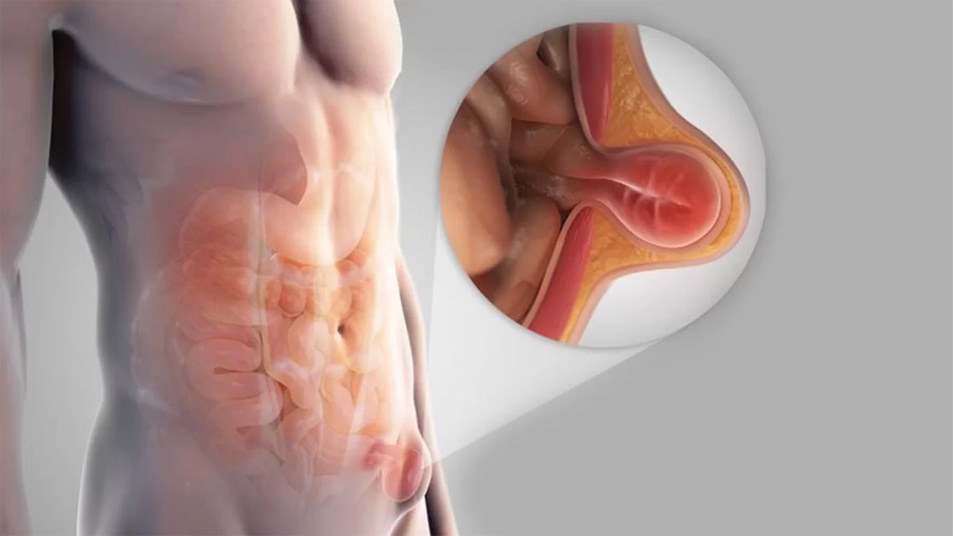
Introduction
When it comes to abdominal hernias, two of the most common types people encounter are inguinal hernias and umbilical hernias. While both involve tissue pushing through a weak spot in the abdominal wall, their causes, symptoms, and treatments can differ significantly.
At Dr. Rakesh Dhupia’s advanced hernia clinic in Indore, patients receive specialized care and precise diagnosis to determine the type of hernia and the best path toward permanent relief. Whether you’re unsure which hernia you might be dealing with or looking for treatment options, this article will guide you through everything you need to know.
What Exactly Is a Hernia?
A hernia happens when internal tissue—often a loop of intestine—pushes through a weak spot or tear in the surrounding muscle wall. You might notice a bulge or feel discomfort in the area. But not all hernias are created equal.
How Do Hernias Form?
Hernias typically result from:
- Weakened abdominal muscles
- Straining during bowel movements
- Lifting heavy objects
- Pregnancy or obesity
- Chronic coughing or sneezing
Over time, pressure builds up inside the abdomen and forces soft tissue outward through a muscle defect.
Related Post
Top Post
What Is an Inguinal Hernia?
Definition & Location
An inguinal hernia occurs in the groin region, where the intestine or fatty tissue pushes through the inguinal canal.
Common Symptoms
- A visible bulge near the groin or scrotum
- Pain or discomfort when bending, coughing, or lifting
- A heavy or dragging sensation in the groin
Who’s Most at Risk?
Men are significantly more likely to develop inguinal hernias. Age, physical activity, and family history also increase risk.
When It Gets Serious
Left untreated, an inguinal hernia can become strangulated—cutting off blood supply to trapped tissue—which is a medical emergency.
What Is an Umbilical Hernia?
Definition & Location
This hernia occurs near the belly button (umbilicus), where abdominal contents bulge outward.
Children vs Adults
In infants, umbilical hernias are common and usually resolve naturally by age 3–5. In adults, they tend to grow larger and need surgical repair.
Symptoms
- Bulge at or near the navel
- Discomfort or pressure when coughing or lifting
- Mild pain around the belly button
Inguinal vs Umbilical Hernia: A Side-by-Side Comparison
Diagnosis typically starts with a physical examination, especially for visible hernias. Your doctor might also recommend:
| Feature | Inguinal Hernia | Umbilical Hernia |
|---|---|---|
| Location | Groin (inguinal canal) | Belly button (umbilicus) |
| Common in | Adult men | Infants and overweight adults |
| Symptoms | Groin bulge, pain, heaviness | Navel bulge, discomfort |
| Risk of complications | Higher | Moderate |
| Surgical necessity | Often required | Sometimes optional in children |
How Are Hernias Diagnosed?
- Physical Exam: Your doctor may ask you to cough while standing to observe the hernia bulge.
- Imaging: In some cases, ultrasound or CT scan is used for confirmation.
Treatment for Inguinal Hernia
Surgical Repair
- Open Hernia Repair: Traditional surgery with an incision
- Laparoscopic Surgery: Minimally invasive, faster recovery
Recovery Tips
- Avoid lifting heavy items for 4–6 weeks
- Wear support garments
- Resume light activity after 1–2 weeks
Treatment for Umbilical Hernia
For Infants
Most umbilical hernias close naturally by age 3. Surgery is only needed if:
- It doesn’t close by age 4–5
- It causes pain or becomes strangulated
For Adults
Surgery is typically required as the hernia won’t heal on its own.
When Is Emergency Care Needed?
Seek immediate medical attention if you experience:
- Severe, sudden pain
- Nausea or vomiting
- Bulge that turns red, purple, or dark
- Inability to push the hernia back in
Can You Prevent Hernias?
Yes! Here’s how:
- Eat high-fiber foods to prevent constipation
- Exercise your core muscles regularly
- Maintain a healthy weight
- Lift objects with your legs, not your back
Why Choose Dr. Rakesh Dhupia for Hernia Surgery in Indore?
Dr. Rakesh Dhupia is a renowned Laparoscopic and General Surgeon offering advanced hernia treatment using modern surgical techniques. Known for patient care, precise diagnosis, and minimally invasive approaches, Dr. Dhupia ensures faster recovery and long-term results.
FAQs: Inguinal and Umbilical Hernias
1. How can I tell if I have an inguinal or umbilical hernia?
Check the location: Groin bulge = inguinal; belly button bulge = umbilical. Always get a medical exam for confirmation
2. Do all hernias require surgery?
Not always. Umbilical hernias in children often resolve naturally. Inguinal hernias usually need surgery.
3. Can I exercise with a hernia?
Light exercise might be okay, but avoid straining. Always consult your doctor first.
4. What is the recovery time for hernia surgery?
Usually 2–6 weeks, depending on the type and approach of surgery.
5. What causes hernias to worsen?
Straining, heavy lifting, chronic coughing, or obesity can all increase hernia size or symptoms.
Conclusion
Understanding the difference between inguinal and umbilical hernias is vital for getting the right treatment. While both types involve abdominal wall weaknesses, their symptoms, risks, and treatment approaches vary. If you suspect a hernia, early diagnosis and expert care can help prevent complications and ensure a quicker recovery.
Trust Dr. Rakesh Dhupia, a hernia surgery expert in Indore, to provide you with personalized, professional, and permanent solutions.
Call to Action
Ready to take the next step toward pain-free living?
Book a consultation with Dr. Rakesh Dhupia today and discover the best hernia treatment options tailored to your needs.
